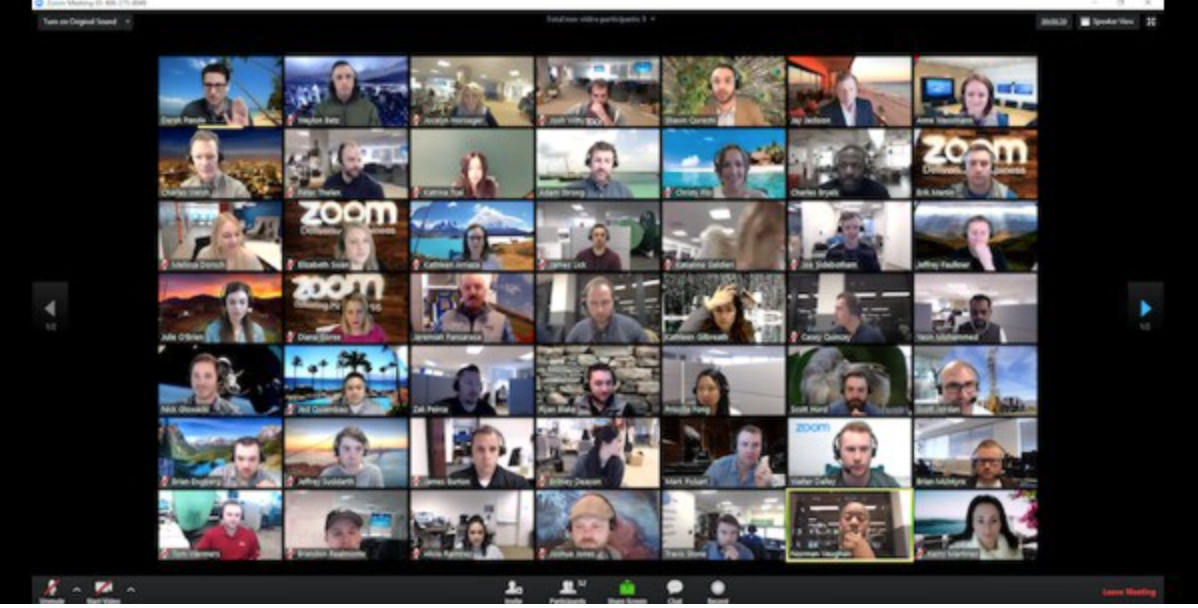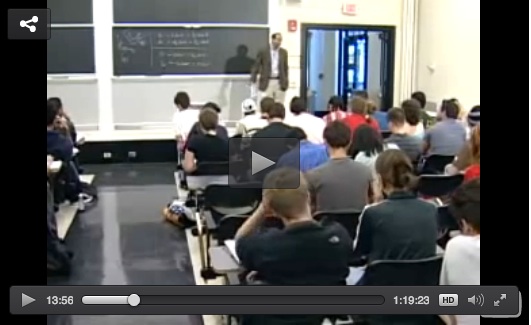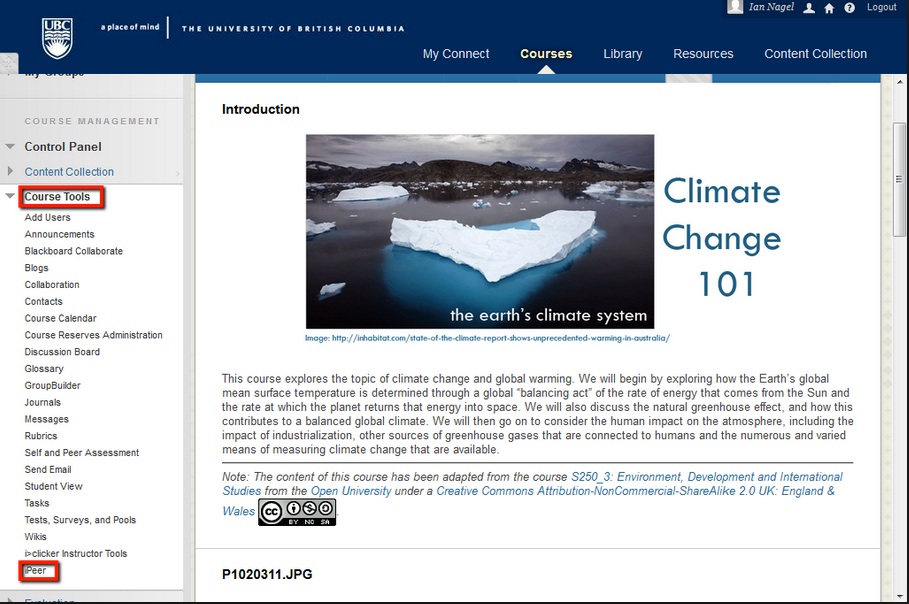
I am slowly working on the third edition of Teaching in a Digital Age. I have added a section to the first chapter on the impact of Covid-19, and have reviewed chapters on epistemology, learning theories, and in-person classroom teaching. Apart from some minor changes and adding a few more podcasts to provide feedback on activities, these chapters are largely unchanged.
However, mainly because of Covid 19 and the rapid uptake of online video-conferencing tools such as Zoom and Microsoft Meet, I have had to make considerable changes to Chapter 4.2. I would particularly appreciate feedback on this section from those who have been using these tools as part of emergency remote learning – or anyone else, for that matter. Here is the new version for comment (type in blue reflects changes the third edition; type in green reflects changes made to the second edition).
4.2 Old wine in new bottles: classroom-type online learning

We start with classroom teaching methods that have been moved into a technological format with little change to the overall design principles. I will argue that these are essentially old wine in new bottles.
4.2.1 Live, streamed video
This is basically a classroom lecture delivered at the time of delivery to remote students (although there may also be live students in the lecture theatre as well – this is sometimes called bi-modal teaching. For an example of this see here.). The remote students may be watching on their own at home, work or in transit, or in small groups at another campus or local learning centre. There is no change in the design from an in-person lecture, although the instructor may need to make sure that the remote students are not ignored if there are questions or discussion. Because the lecture is live, and everyone attends at the same time (even though they may be in different places), the teaching is synchronous. For an example, see here.
Live streamed video is often the first step instructors take into online learning, because they do not have to do anything new other than learn how to set up and switch on the equipment. As the technology became cheaper and easier to use, the use of live streamed lectures doubled between 2016 and 2017 in Canada (Bates et al., 2018). When the Covid-19 pandemic suddenly burst onto the scene in March, 2020, and instructors and teachers had to pivot immediately to emergency remote learning, this was the method adopted by the majority, mainly using Zoom or other online video-conferencing technologies. The advantage of online video-conferencing software is that it can be used from anywhere with an internet connection by instructors and students.
Some instructors require all students to be present during the live lecture in order to ensure participation, but this can be counter-productive if the aim of going online is to increase flexibility for students. This flexibility can be accommodated by also recording the lecture.
4.2.2 Recorded streamed lectures
Lectures can be recorded in two main ways.
- if using Zoom or a similar online video-conferencing system, the session can be recorded and made available for later use by students. Depending on the licensing agreement, there is often a limit on how long the video will remain available, but it can be kept usually for at least a couple of months or to the end of a semester.
- lecture capture technology such as Panopto or Kaltura is another, older, technology that allows a ‘live’ classroom lecture to be recorded and stored on a server for later streaming to students. The lecture capture equipment is usually installed in the lecture theatre. This technology, which automatically records a classroom lecture once activated by the lecturer, was originally designed to enhance the classroom model by making lectures available for repeat viewings online at any time for students regularly attending classes – in other words, a form of homework or revision.

Lecture capture led to the development of massive open online courses (xMOOCs), such as those offered by Coursera, Udacity and edX. These MOOCs were originally classroom lectures recorded using lecture capture technology at Stanford, MIT and Harvard, and then made available to the general public over the internet.
The main advantage of recording lectures is to allow all students (those present and those that missed the lecture) to review the lecture at their leisure. Thus recording lectures is an asynchronous technology, in that the lectures can be viewed at any time and any place with Internet access. Lecture capture is a more permanent alternative to using the recording facility in video-conferencing software such as Zoom, although video-conferencing software can be used from anywhere with an Internet connection.
Recorded video can be integrated with a learning management system (see 4.2.3 below). Passwords can be used to limit access to the recorded videos to registered students only. In some cases, making recordings of lectures available to students has been shown to reduce student drop-out dramatically.
Flipped classrooms, which pre-record a lecture for students to watch on their own, followed by discussion in class, are an attempt to exploit more fully this potential (for an example see here).
4.2.3 Classroom-type courses using learning management systems
Learning management systems (LMSs), such as Blackboard, Canvas, D2L and Moodle, are software that enable instructors and students to log in and work within a password protected online learning environment. LMSs can be used in a variety of ways. In this section the focus is on using an LMS to mirror a classroom approach to teaching. The main difference is that the student using an LMS is working remotely and asynchronously.
The software allows the instructor or teacher to organise the student work into weekly units or modules. The instructor selects and presents the material to all students, a large class enrolment can be organized into smaller sections with their own instructors or adjunct faculty, there are opportunities for (online) discussion, students work through the materials at roughly the same pace, and assessment is by end-of-course tests or essays. The learning management system is primarily an asynchronous technology, in that students can access the software at any time and any place with an internet connection.

Originally LMSs were primarily text-based, but now they can integrate both live or recorded video, such as Zoom meetings or streamed lectures.
The main design differences with video-based or classroom lectures is that in an LMS:
- the content is primarily text based rather than oral (although increasingly video and audio are now integrated into LMSs),
- the student-teacher interaction and online discussion are mainly asynchronous rather than synchronous,
- students are assigned online work within the LMS to follow up on the instructor-provided material
- the course content is available at any time from anywhere with an Internet connection.
These are important differences from a physical classroom, and skilled teachers and instructors can modify or adapt LMSs to meet different teaching or learning requirements (as they can in physical classrooms), but the basic organizing framework of the LMS (weekly modules, regular assessment, and interaction between students and with an instructor) remains the same as for a physical classroom.
Nevertheless, the LMS is still an advance over online designs that merely put lectures on the Internet as pre-recorded videos, or load up pdf copies of Powerpoint lecture notes, as is still the case unfortunately in many online courses. There is also enough flexibility in the design of learning management systems for them to be used in ways that break away from the traditional classroom model, which is important, as good online design should take account of the special requirements of online learners, so the design needs to be different from that of an in-person classroom model.
Perhaps of most importance though is that most LMSs embed good design principles, such as:
- requiring clearly stated learning objectives,
- a clear weekly work structure for students,
- opportunities for online discussion,
- opportunities for feedback from instructors, and
- continuous and/or summative assessment.
These features are built in to the software to guide instructors in their design. Other ways of designing teaching with an LMS will be discussed later in this chapter.
4.2.3 The limitations of the classroom design model for online learning
Old wine can still be good wine, whether the bottle is new or not. What matters is whether classroom design meets the changing needs of a digital age. However, just adding technology to the mix, or delivering the same design online, does not automatically result in meeting changing needs.
It is important then to look at the design that makes the most of the educational affordances of new technologies, because unless the design changes significantly to take full advantage of the potential of the technology, the outcome is likely to be no better than that of the physical classroom model which it is attempting to imitate. Thus even if the new technology merely results in helping more students memorise better or learn more content, for example, this may not be sufficient to meet the higher level skills needed in a digital age.
The second danger of just adding new technology to the classroom design is that we may just be increasing cost, both in terms of technology and the time of instructors, without changing outcomes.
The most important reason though is that students studying online are in a different learning environment or context than students learning in a classroom, and the design needs to take account of this. This will be discussed more fully in the rest of the book.
Education is no exception to the phenomenon of new technologies being used at first merely to reproduce earlier design models before they find their unique potential. However, changes to the basic design model are needed if the demands of a digital age and the full potential of new technology are to be exploited in education.
What’s next
To provide context for this section, the following sections of Chapter 4 are as follows:
4.8 Making decisions about teaching methods
I have also discussed the limitations of lectures in
Your feedback
You can either use the comment section at the far end of this post or send me an email to tony.bates@ubc.ca









 Dr. Tony Bates is the author of eleven books in the field of online learning and distance education. He has provided consulting services specializing in training in the planning and management of online learning and distance education, working with over 40 organizations in 25 countries. Tony is a Research Associate with Contact North | Contact Nord, Ontario’s Distance Education & Training Network.
Dr. Tony Bates is the author of eleven books in the field of online learning and distance education. He has provided consulting services specializing in training in the planning and management of online learning and distance education, working with over 40 organizations in 25 countries. Tony is a Research Associate with Contact North | Contact Nord, Ontario’s Distance Education & Training Network.


Thanx for these updates of Teaching In a Digital Age, which are great.
You may like to mention that recorded lectures raise again issues about ownership and control of educational materials. An engaging way of raising this may be to mention the recorded lectures of a Concordia prof that were still being used 3 years after his death (Elek, 2021; Grillo and Ross, 2021; Zamudio-Suarez, 2021).
You may also like to mention that some are concerned that learning management systems expand managers’ tools for imposing institutional frameworks and monitoring compliance with institutional policies. I think I recall that copyright owners sought access to a (York University?) learning management system to collect data on faculty’s use of copyright materials. I think the copyright owners lost that case, but I assume they will try another strategy.
Elek, Chloe (2021, February 2) How an eConcordia lecturer is still teaching, even after his death. The Concordian,
https://theconcordian.com/2021/02/how-an-econcordia-lecturer-is-still-teaching-even-after-his-death/
Grillo, Matt and Ross, Selena (2021, January 29) Virtually normal: Montreal student tries to contact his online prof, only to learn he’s dead. CTV News,
https://montreal.ctvnews.ca/virtually-normal-montreal-student-tries-to-contact-his-online-prof-only-to-learn-he-s-dead-1.5288640
Zamudio-Suarez, Fernanda (2021, January 30) The dead professor and the surprised student. Chronicle of Higher Education,
https://www.chronicle.com/newsletter/weekly-briefing/2021-01-30?cid2=gen_login_refresh&cid=gen_sign_in
Many thanks for this, Gavin. Yes, I guess at some point I’m going to have to deal with copyright and ownership of digital materials. It is an important and serious issue, although one that many institutions have managed successfully, mainly through consultation and discussion with faculty. One solution is to separate the copyright between content (belonging to the faculty member) and courses (belonging to the institution). John Willinsky’s recent paper on what students should pay for copyrighted material provides some useful principles: https://preprints.scielo.org/index.php/scielo/preprint/view/1694.
One of the main differences between traditional classroom-type learning and online courses is that the former is largely passive and the latter is active. In a classroom-type online course, a student must actively acquire information and participate in the delivery of the course material. It is also more challenging to teach a synchronous class because the students are not visually interacting with the instructor. On the other hand, an online course has regular reading assignments and no teacher interaction, which means it is a challenge for a student.
In a traditional classroom, students are assessed through exams, which are generally invigilated by an examiner. In an online course, students are evaluated through assignments. Assessments can be open book or individual, and the learning environment differs significantly. The learning environment must be adapted to match the differences between traditional and online classes to ensure the most efficient outcomes for students. In addition, students must be able to work independently and be a self-directed learner.
I personally like online learning because it gives me a lot of free time!
I work for cheap paper writing service, but my daughter studies remotely! I like it a lot because I have a lot of time to do my work and help my daughter with her homework!
Thanks, Elizabeth. I really appreciate your sharing your experience of learning online and in class, especially from a student perspective
As an intern, my experience in the field of education has been truly impactful. However, what stood out the most was witnessing the transformation that a nursing soap note writing service https://place-4-papers.com/soap-note brought to students. It not only enhanced their critical thinking and communication skills but also empowered them to provide comprehensive patient care.